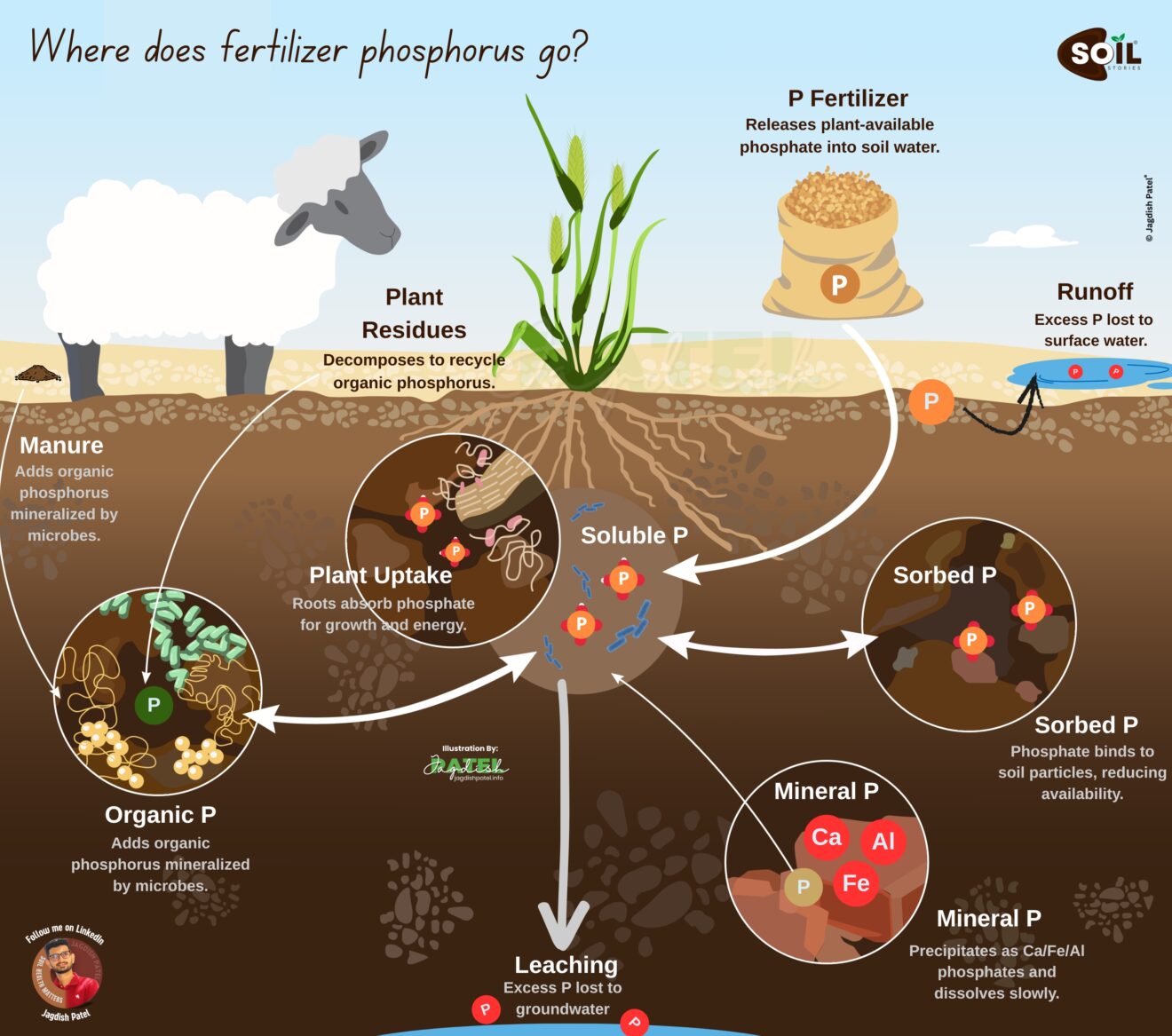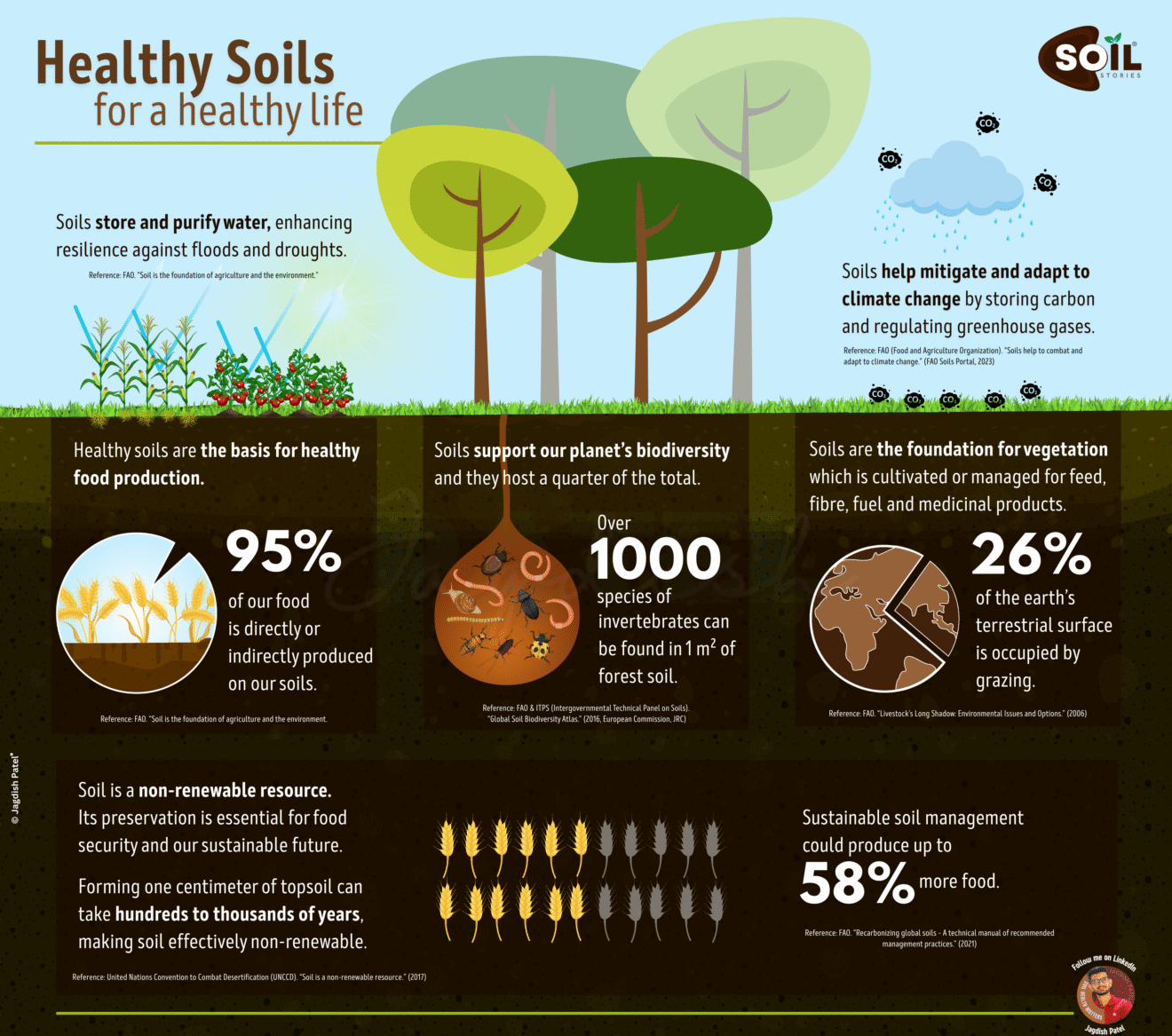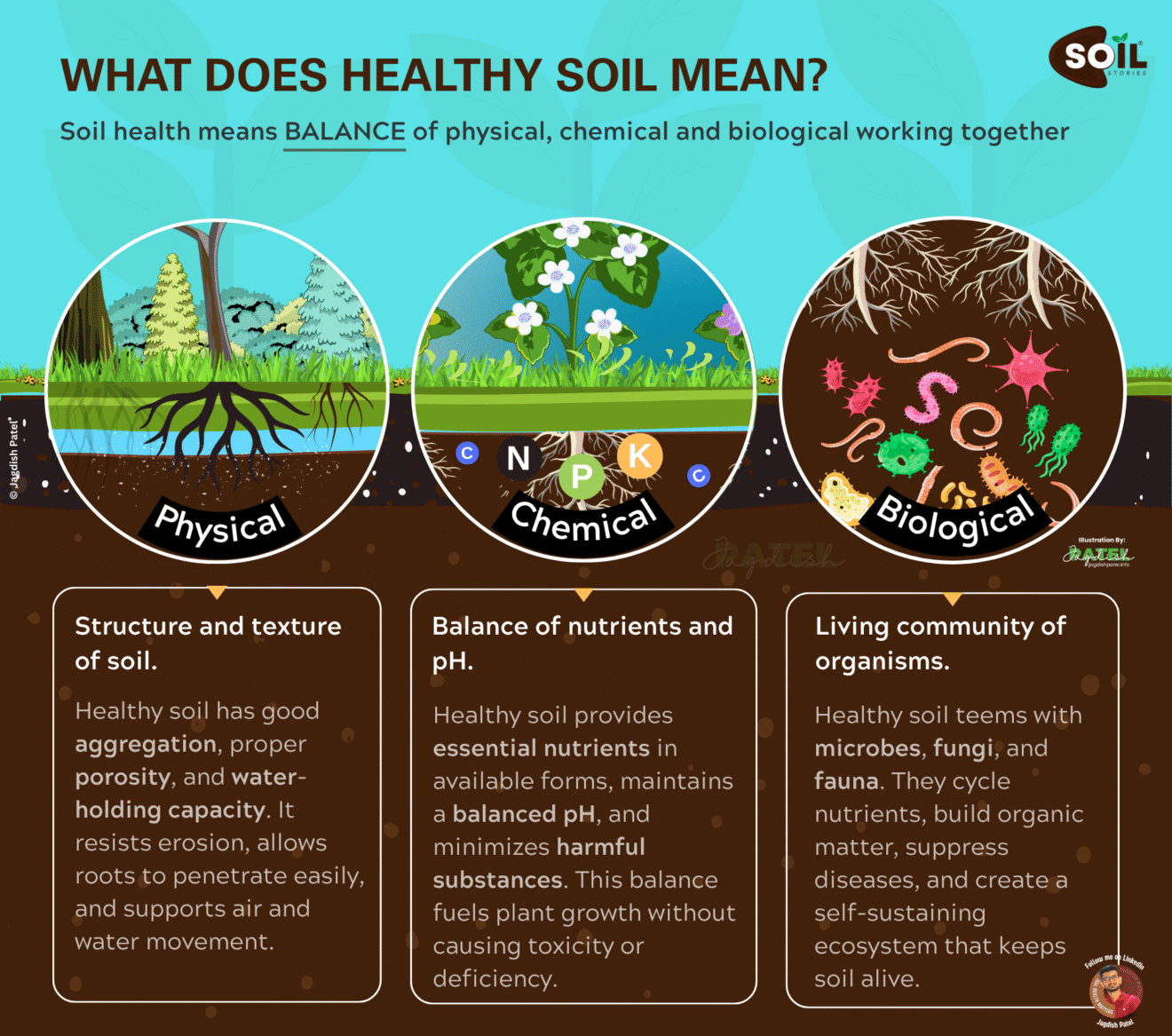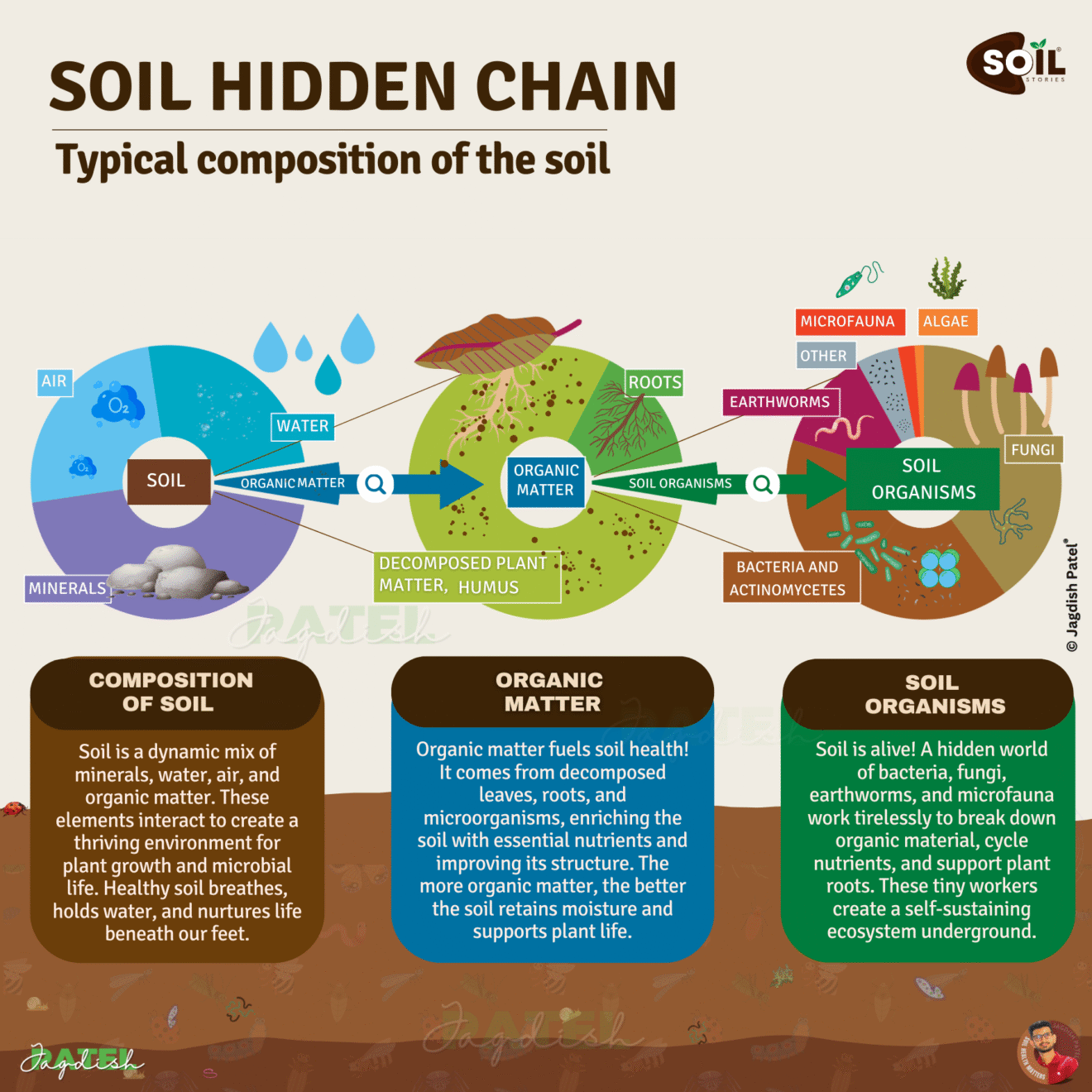When it comes to growing healthy crops or home gardens, fertilizers often take center stage. But beneath the surface lies a hidden ecosystem that performs a much bigger role. That ecosystem is alive with soil microbes.
These tiny life forms, including bacteria, fungi, and others, break down organic matter, unlock essential nutrients, and deliver them directly to plant roots. This process is not just helpful. It is how nature has fed plants for millions of years.
What Are Soil Microbes?
Soil microbes are microscopic organisms that live in the soil and support plant growth. They include:
- Bacteria
- Fungi
- Actinomycetes
- Protozoa
- Nematodes
Each type plays a unique role in nutrient cycling, disease suppression, and soil structure improvement.
One teaspoon of healthy soil can hold more than a billion of these tiny organisms. That makes soil one of the most biologically active ecosystems on Earth.
Dirt vs. Soil: What’s the Difference?
There is a big difference between dirt and soil.
Dirt is lifeless and compacted. It cannot support sustained plant growth without heavy inputs.
Soil, on the other hand, is alive with microbes and organic matter. It breathes, absorbs, digests, and stores nutrients. It acts as a living system that supports both the plant and the planet.
Soil with active microbial life improves:
- Nutrient availability
- Soil texture and structure
- Water retention
- Disease resistance
- Crop resilience
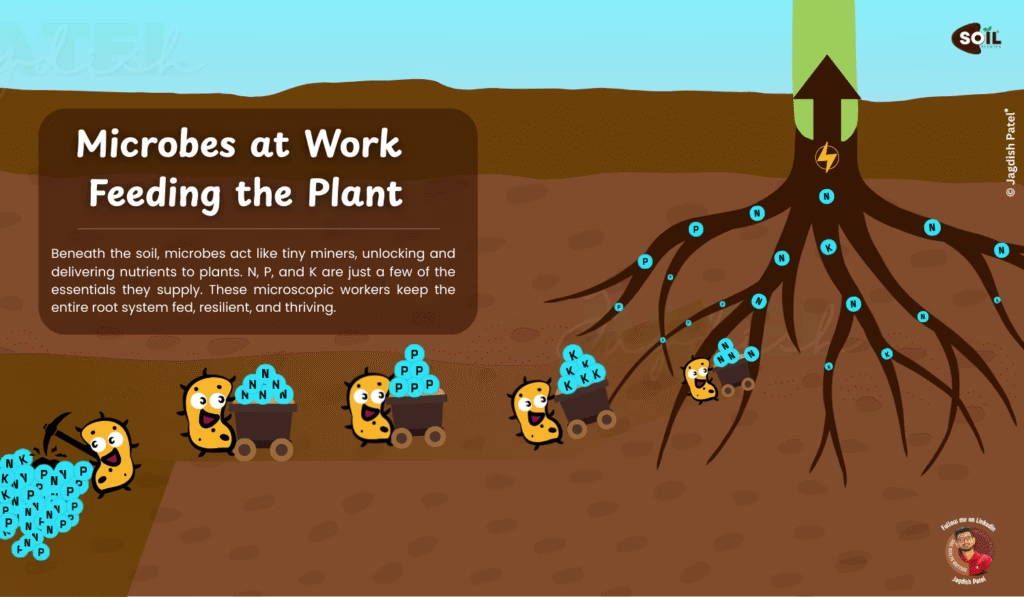
How Microbes Feed the Plant
Soil microbes break down organic matter into simpler forms that plants can absorb. They help release and mobilize nutrients such as:
- Nitrogen
- Phosphorus
- Potassium
- Calcium
- Magnesium
- Zinc and Iron
Some microbes fix nitrogen from the air. Others solubilize phosphorus from rock particles. Many form biofilms that protect roots and help transport water and nutrients.
These biological processes make nutrients available without the need for synthetic fertilizers.
The Role of Root Exudates
Plants actively support microbial life through root exudates.
These are carbon-rich compounds like sugars, amino acids, and enzymes released by roots into the surrounding soil. They act as food for microbes and attract specific species that can help the plant.
This relationship is mutual. Plants feed microbes. Microbes feed plants.
The Power of Microbial Diversity
Different types of soil microbes play different roles. A diverse microbial population ensures multiple layers of support for plants.
Here are a few examples:
- Rhizobia bacteria fix nitrogen in legume roots
- Mycorrhizal fungi extend root access to water and minerals
- Phosphate-solubilizing bacteria release phosphorus locked in soil
- Decomposer fungi break down organic waste into humus
- Actinomycetes contribute to disease resistance
Diverse soils are more resilient, more fertile, and more productive.
Soil Microbes in Regenerative Farming
Many regenerative farmers are shifting away from chemical inputs and turning toward microbial solutions.
Some of their strategies include:
- Compost and compost tea application
- No-till or low-till practices
- Use of microbial biofertilizers
- Cover cropping to maintain root exudate flow
- Minimal pesticide use to avoid killing beneficial microbes
These approaches improve soil biology and build long-term fertility. Farmers in India, Africa, and the United States are already seeing increased yields and reduced input costs.
Why This Visual Focuses on Microbes
In this illustration titled “Microbes at Work: Feeding the Plant”, I highlighted only the microbial delivery team. These tiny miners are shown carrying nutrients like nitrogen, phosphorus, and potassium to the plant roots.
Of course, there is more to the story. Root exudates, enzymes, and mineral particles also play key roles. But for this visual, I chose to simplify the complex process and focus specifically on the soil microbes.
By isolating one important part of the system, I aimed to make the message more accessible. Future visuals will explore the broader network of interactions including root exudates, soil enzymes, and plant signaling.
Practical Tips for Farmers and Gardeners
Want to support soil microbes in your farm or garden? Here are some simple and effective practices you can begin implementing today.
1. Apply compost
Well-decomposed compost introduces beneficial microbes and organic matter into your soil.
2. Avoid overuse of chemical fertilizers
High salt levels from synthetic fertilizers can disrupt microbial balance and reduce diversity.
3. Keep soil covered
Use cover crops or mulch to reduce erosion, retain moisture, and maintain microbial habitat.
4. Minimize tillage
Tillage disturbs microbial networks and fungal hyphae. Reduced till or no-till farming supports soil biology.
5. Include crop diversity
Rotate different crops and interplant varieties to attract and support diverse microbial communities.
6. Use microbial inoculants
Products containing mycorrhizae, rhizobia, or other beneficial microbes can give your soil biology a helpful boost.
Supporting soil microbes can reduce dependency on external inputs and build long-term resilience.
Final Thoughts from a Soil Scientist
As a soil scientist and visual storyteller, I believe we are only beginning to uncover the full potential of microbial life beneath our feet.
Soil is not just a place to anchor roots. It is a living, intelligent ecosystem. When we care for the life in soil, that life begins to care for our crops, our climate, and our collective future.
This understanding is not new. It has existed in traditional agricultural wisdom for centuries and is now being rediscovered by modern science.
Let us shift from treating soil as dirt to respecting it as life.
Conclusion: Let the Microbes Do the Work
Soil microbes are the original nutrient delivery system. They work every day, unseen but essential.
They break down organic matter, release nutrients, protect plants, and improve soil structure. They reduce the need for chemicals and make the entire growing process more sustainable.
By nurturing soil microbes, we are not just improving our crops. We are building a healthier system for the planet.
Let the microbes do their job. And let us do ours by creating the right conditions for them to thrive.

